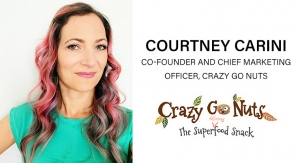Joanna Cosgrove, Online Editor10.01.12
There has never before been such a strong and concentrated focus promoting healthy eating. And while there are plenty of healthy food options available to consumers, iModerate Research Technologies sought to discover the factors that play into a consumer’s health food choices. Specifically, the Denver, CO-based market research firm wanted to know how familiar consumers were with the tenets of healthy eating, and if they understood the differences between functional and fortified foods.
The resulting published study, “How Do Functional and Fortified Foods Fit with Healthy Eating?,” polled a sample of men and women across the U.S. and found that despite the many messages promoting healthy eating, confusion still abounds, especially as it relates to functional foods (those which inherently contain biologically active compounds that provide a clinically proven and documented health benefit) and fortified foods(those that have extra nutrients added to them that are not normally present).
“People generally want to eat healthy and do what’s best for them and their family,” said Adam Rossow, vice president of marketing at iModerate. “However, while consumers know some of the basics and what to stay away from, there is a tremendous lack of practical information and education that would help break down the barriers for them, inspire purchases and create a loyal following.”
Eighty-one consumers over the age of 18 and hailing from the Northeast, Midwest, South and West told iModerate in one-on-one interviews that they knew they should be “eating healthier,” and that their food choices shouldn’t be too high in fat, sugar, calories or “unpronounceable” ingredients, but they weren’t exactly clear on the practical constructs of food shopping and eating.
The interviews indicated that taste and price were closely related purchase drivers. “Ultimately, the items that end up in consumers’ shopping carts are those that measure up to their standards of taste, cost, convenience, and finally healthiness,” the report said. “Price sensitivity makes them a bit hesitant to try new items that they aren’t familiar with, out of fear that no one [in their family] will like it and it will be wasted. Taste also governs how consumers choose between like items that are similarly priced. Whether the food is functional or fortified, and regardless of the relative health benefits of either food, most will opt for whichever tastes best.”
The current lack of information related to what types of foods are healthy and what specific health benefits these foods provide seems to be creating a real challenge for consumers, said Mr. Rossow. “Aside from a lack of information and prominent marketing by functional food producers and purveyors, the study found definitive barriers that prevent consumers from purchasing fortified and functional foods.
“Concerns about taste, cost, spoilage, convenience and preparation are the major hurdles when it comes to purchasing and consuming functional foods,” he continued. “When it comes to fortified foods, consumers’ apprehension stems from the fortification process itself, believability as to the product’s health claim, the possible overconsumption of nutrients and long-term health implications.”
In response to the insights gained from talking directly to consumers, iModerate offered three sets of pointers to the food industry.
Help consumers make more informed purchase decisions:
The resulting published study, “How Do Functional and Fortified Foods Fit with Healthy Eating?,” polled a sample of men and women across the U.S. and found that despite the many messages promoting healthy eating, confusion still abounds, especially as it relates to functional foods (those which inherently contain biologically active compounds that provide a clinically proven and documented health benefit) and fortified foods(those that have extra nutrients added to them that are not normally present).
“People generally want to eat healthy and do what’s best for them and their family,” said Adam Rossow, vice president of marketing at iModerate. “However, while consumers know some of the basics and what to stay away from, there is a tremendous lack of practical information and education that would help break down the barriers for them, inspire purchases and create a loyal following.”
Eighty-one consumers over the age of 18 and hailing from the Northeast, Midwest, South and West told iModerate in one-on-one interviews that they knew they should be “eating healthier,” and that their food choices shouldn’t be too high in fat, sugar, calories or “unpronounceable” ingredients, but they weren’t exactly clear on the practical constructs of food shopping and eating.
The interviews indicated that taste and price were closely related purchase drivers. “Ultimately, the items that end up in consumers’ shopping carts are those that measure up to their standards of taste, cost, convenience, and finally healthiness,” the report said. “Price sensitivity makes them a bit hesitant to try new items that they aren’t familiar with, out of fear that no one [in their family] will like it and it will be wasted. Taste also governs how consumers choose between like items that are similarly priced. Whether the food is functional or fortified, and regardless of the relative health benefits of either food, most will opt for whichever tastes best.”
The current lack of information related to what types of foods are healthy and what specific health benefits these foods provide seems to be creating a real challenge for consumers, said Mr. Rossow. “Aside from a lack of information and prominent marketing by functional food producers and purveyors, the study found definitive barriers that prevent consumers from purchasing fortified and functional foods.
“Concerns about taste, cost, spoilage, convenience and preparation are the major hurdles when it comes to purchasing and consuming functional foods,” he continued. “When it comes to fortified foods, consumers’ apprehension stems from the fortification process itself, believability as to the product’s health claim, the possible overconsumption of nutrients and long-term health implications.”
In response to the insights gained from talking directly to consumers, iModerate offered three sets of pointers to the food industry.
Help consumers make more informed purchase decisions:
- Create opportunities and reasons for consumers to learn more about your healthy products. For example, if consumers know that a serving of fortified cookies offers the nutrition of a cup of spinach, that information might sway them to reach for the admittedly tastier, but still nutritious, fortified option.
- Discover what consumers value in healthy foods. Follow their lead and build these elements into your products and promotions.
- Link information about your products to specific health problems it solves or prevents. This is where grocers and manufacturers come in; they have a unique opportunity to fill this informational void. Consumers’ knowledge of their own nutritional needs is spotty at best. Capitalize on this lack of information and make your audience aware of the health issues your product solves.
- Take the guesswork out of healthy eating. Offer recipes for your products and let shoppers taste them, or create a destination set up that enables consumers to buy what they need to make a special healthy meal in one designated area.
- Food placement also matters. Some consumers aren’t keen on the produce aisle; consider presenting healthy items in more convenient “grab-and-go” locations.
- Allow on-the-go consumers to make a healthy choice quickly. Offer fortified products and packaged produce in convenient single-serving sizes.
- Create food pairings that make healthy food more palatable.
Market products with a palpable health purpose:
- Clearly identify health attributes and benefits. Consumers need to be taught and reminded that products are nutritious, and will appreciate products that connect the dots between the “hows” and “whys” of their healthiness.
- Make the most of product labeling. Fortified food labels provide a great opportunity to reinforce ad messaging about a product’s nutritional perks, and drive home the ways in which those benefits play into a healthy lifestyle.



























